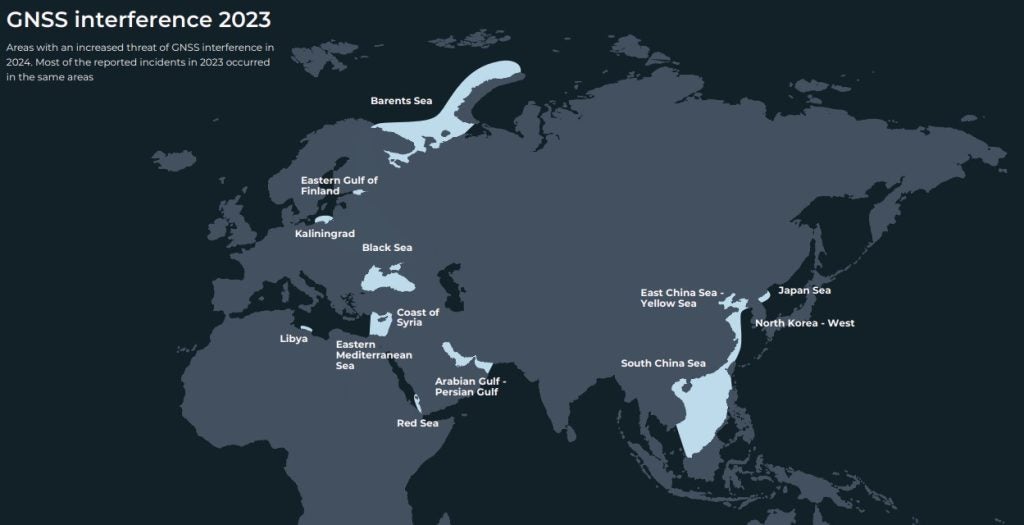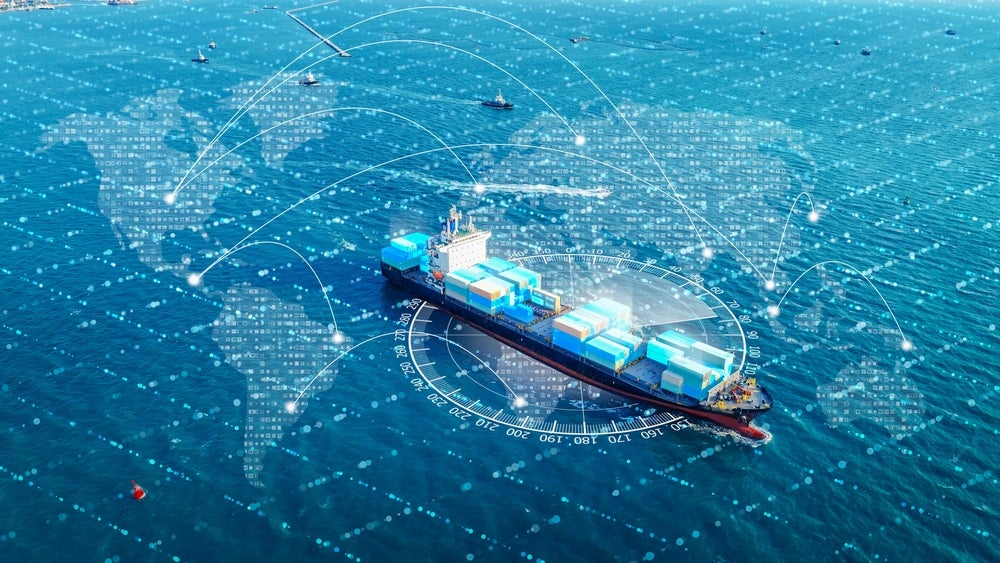
When armed Houthi rebels first descended from a helicopter to hijack the Galaxy Leader in the Red Sea on 19 November, few could have pre-empted the global fallout in freight rates, shipping routes, and crew safety that would follow.
Seven months of Houthi attacks later, western shipping companies are frantically pursuing alternatives to the Suez Canal and Red Sea route, which saves more than a week in voyage time between Europe and Asia.
Circumnavigating the Cape of Good Hope has been the most common approach, with container journeys around Africa skyrocketing since last October. But adding roughly 11,300km to already considerable distances is far from a feasible long-term solution.
Russia has looked to take advantage of the Red Sea disruption to turn the Northern Sea Route (NSR) into a new Suez Canal.
For years, NSR activity has been rising. In 2021, around two million tonnes of cargo passed through the NSR, a record level of international transit – until all shipping in the Arctic came to a complete halt following Russia’s full-scale invasion of Ukraine in February 2022 and the subsequent US and European sanctions. For the first time in 15 years, there were no international transits through the NSR, even by China’s state-owned COSCO.
Arctic routes are now returning, driven by Russian and Chinese momentum and a global obsession with the region’s vast untapped natural resources; an estimated 13% of the world’s undiscovered oil and 30% of undiscovered natural gas.
How well do you really know your competitors?
Access the most comprehensive Company Profiles on the market, powered by GlobalData. Save hours of research. Gain competitive edge.

Thank you!
Your download email will arrive shortly
Not ready to buy yet? Download a free sample
We are confident about the unique quality of our Company Profiles. However, we want you to make the most beneficial decision for your business, so we offer a free sample that you can download by submitting the below form
By GlobalDataEarlier this month, Russian state nuclear agency Rosatom signed an agreement with Chinese line Hainan Yangpu New Shipping to potentially operate a year-round NSR through the Arctic Circle. The deal also involves collaboration in the design and construction of new ice-class container ships.
According to the Russian Government’s plans, if companies follow through on projects involving liquefying natural gas, precious metals, gas condensate, coal, oil, and other commodities, 80 million tonnes of cargo per year could be shipped via the NSR between Europe and Asia by the end of 2024.
All of this comes amid Moscow’s wider plans to invest around €20bn ($21.39bn) up to 2035 on the NSR development project.
A route suited for Russian icebreakers
Three shadows linger over the NSR’s commercial viability: ecology, geopolitics, and cybersecurity.
Ecologically, there are physical challenges the Arctic Circle poses to vessels attempting to traverse its icy terrain. In the North Pole, sea ice covers the largest area at the end of winter (in March), and thaws to its smallest area in September each year.
Climate change, however, is occurring four times faster in the Arctic Circle than anywhere else on the planet. Vast chunks of Arctic ice are melting due to rising temperatures, a phenomenon that the shipping industry plays its own part in, accounting for 3% of global carbon emissions.
Even as the Arctic’s annual ice-free window for transits elongates each year, “the NSR is not yet a viable alternative”, according to Isabel Hilton, visiting professor at King’s College London.
“Ships must travel more slowly in the Arctic environment and strengthened hulls and ice-breaker escorts remain important despite the rising Arctic temperatures and the rapid melting of the sea ice,” Hilton tells Ship Technology.
“Despite its potential, most of the commercial traffic so far on this route has been LNG heading from Russian facilities to Japan and China in specialist vessels.”

Icebreakers are still a necessity in the Arctic. Russia has consolidated its monopoly over the NSR by growing its fleet of nuclear-powered icebreakers – the only such fleet in the world.
The US Department of Defense (DoD) has openly recognised the gulf in icebreaker capabilities compared to Russia, which boasts at least 28 icebreakers to Washington’s two.
Last year, Russian authorities docked the nuclear-powered Sevmor, a 34,600-deadweight tonnage (dwt) vessel carrying up to 1,324 TEU. The ship will serve on the NSR, while Russia has also commissioned a new nuclear-powered icebreaker Ural (7,154 dwt) alongside it.
The sheer size of the Arctic shorelines along the NSR poses a separate issue, as does the inhospitable nature of the region.
Part of Russia’s investment has funded an increase in the number of Arctic ports of call from four to 11, authorities say, with the NSR extended to the far eastern city of Vladivostok.
Between Murmansk and the Bering Strait, however, the NSR passes along 2,500 miles of nearly desolate Siberian tundra, where the lack of port infrastructure along the route results in ships being unable to receive assistance in the case of a breakdown or damage.
Operating in such remote regions under harsh conditions also results in higher insurance premiums for cargo ship operators, albeit not to the extent of Red Sea freight prices.
The NSR is a Sino-Russo-dominated theatre
The second cloud lingering over the NSR’s internationalisation is geopolitical. With Russian officials still divided over legislature which would authorise foreign flagged vessels’ transit, will the NSR ever become commercially viable for shipping companies harking from Western countries at odds with Moscow and Beijing?
Amid Russia’s sustained offensive into Ukraine and increasing ostracisation from the US and European nations, the likelihood is low.
In a similar expansionist spirit, analysts at the Centre for Strategic and International Studies say Russian President Vladimir Putin personally identifies with Russia’s Arctic ambitions, seeking to use the narrative of man conquering nature as a cornerstone of contemporary Russian nationalism.
To do so, Russia looks to its allies: primarily China.
Chinese premier Xi Jinping “has made no secret of his interest in the NSR”, says Hilton, who is also the founder of China Dialogue.
“China’s interest has been further fuelled by the blockage of the Suez Canal by the stranded Ever Given in 2021 and the recent upsurge of attacks on shipping in the Red Sea”, Hilton tells Ship Technology. “China, with its close connection with Iran, has suffered less than others, but accidents can happen.”

While Putin’s tactics have been explicit and offensive, bulking out Russia’s vast icebreaker fleet and building ports along the NSR, Beijing’s approach has been subtler.
Geographically speaking, Chinese coastlines do not border the Arctic. The People’s Republic of China (PRC) does not claim sovereignty on under-continental shelves or water in the region – but defines itself as a ‘Near-Arctic State’ in a push for governance.
“China’s access to the Arctic waters is also closely connected to its relationship with Russia, which is currently warm but historically a mixed picture,” Hilton adds. “China is playing a long game in its strategic thinking as an observer in the Arctic Council and an active participant in polar research and in discussions on fishing and mineral extraction, and although a year-round NSR is still some years away, China aims to be well positioned when it happens.”
Such dominance is unlikely to see equivalent involvement from the US or Western allies, although some Russia and China-friendly states will look to benefit from the two powers’ NSR project, as seen last year when Dubai’s DP World struck an NSR shipping deal with Rosatom.
A hotbed of ‘Forest Blizzard’ cyberattacks
The predominant doubts around the NSR are ecological and geopolitical, but a third issue lies in the murky world of cybersecurity.
So far in 2024, there has been a drastic spike in cyberattacks targeting vessels in the Barents Sea, the boundary of which (the Kara Strait) marks the start of the NSR.
The Russian Military Intelligence Service’s (GRU) ‘Forest Blizzard’ is a primary threat actor. According to Norwegian cybersecurity firm NORMA Cyber, cyber espionage operations in the region are targeting the logistics, transportation, and energy sectors.

Also known as ‘Fancy Bear’ or ‘APT28’, Forest Blizzard is built around network reconnaissance, using port-scanning, brute force, or password spraying activity to identify vulnerabilities or steal credentials for further cyber operations.
Much of this activity, particularly GPS jamming, has reportedly originated from bases in the Gulf of Finland, likely from the Russian island of Gogland.
This data is based on government tracking and reports by ship operators, which belong to the Norwegian Shipowners Association, a NORMA Cyber official tells Ship Technology.

While serious incidents have largely been avoided, this hotbed of hostile cyber activity on the southern edge of the NSR may be enough to make cargo operators think twice before jetting off into its already hazardous waters.
Should melting ice and Red Sea turbulence continue – or escalate – shipping firms will be forced to find alternatives to the Suez Canal.
But, while Russia and China continue to convert grand NSR ambitions into action, the route’s commercial viability, at least globally, remains limited by ecological obstacles, geopolitical tensions and uncurbed cyber threats.







